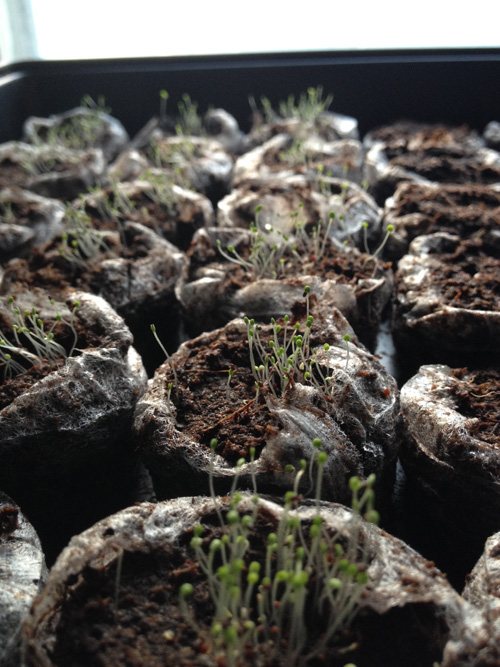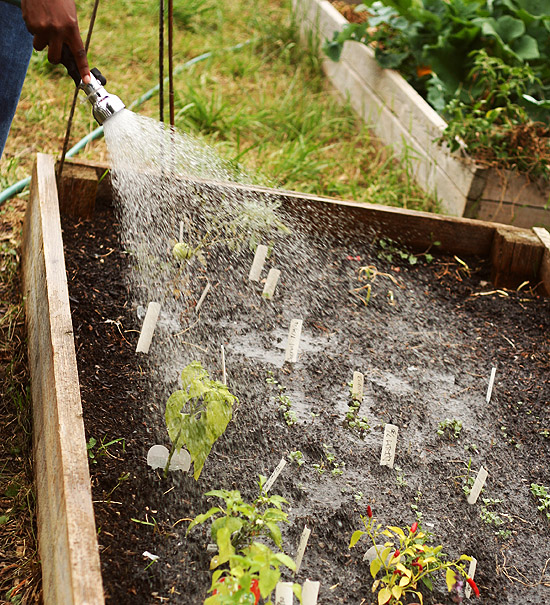There’s no denying it, gardening can be a tough hobby, especially for a newbie. We all go in with such high hopes of a bountiful harvest and soaring crops. Unfortunately the reality can be quite the opposite. There are several major mistakes that almost every gardener makes at one time or another. Only experience and time can take you from beginner to expert gardener, but these beginner gardening tips can help, too. Let’s go over five common garden fails most beginners make their first year. 
Garden fail #1: Getting the timing totally wrong
This is usually the very first mistake new gardeners make, and it happens when the air outside is still bitter cold and there’s snow on the ground. Many newbie gardeners are in a hurry to get started on their new hobby, and gardening centers are no help, as they only encourage planting too early by setting out beautiful seed displays and potting soil.
The truth is, if you start your seeds too early, they’ll not survive long enough to be transplanted. Little seedlings need a lot of light and nutrients. Growing them in tiny cups in your home isn’t going to give them what they need for long, and will result in leggy, weak plants. Be patient and wait until closer to spring to start seeds, and be completely sure you’re not transplanting too early. Frost can be a quick killer of a lot of hopes and dreams for gardeners that are in too big of a hurry.
Timing can be a problem if you’re too late in the game as well. If you wait until July to get your tomato seedlings in the ground, you likely won’t have any ripe fruit before the frost comes and wipes out all of your hard work. Pay close attention to frost dates in your area, and follow the directions on the seed packets for planting times.
Garden fail #2: Planting seeds that are totally wrong for your geographical area
Choosing seeds is the very first act that you’ll make as a gardener. There are a lot of things to consider: organic, GMO, hybrid, disease-resistant…the list goes on. It can be overwhelming to a new gardener. The very first thing you want to check before ordering or buying seeds is how long they’ll take to go from seed to fruit.
If you live in a place with a short growing season and choose a variety that requires a long growing season, you’re never going to see that plant reach maturity, no matter how much you try. Read seed packets carefully, and if possible, order from a local company that’s more likely to have the varieties meant for your geological area.

Watering the garden via Ramon Gonzalez
Garden fail #3: Giving your plants way too much water, or no water at all
Overwatering and underwatering are two of the biggest mistakes beginner gardeners make. Watering too often can cause the roots of plants to rot, which will kill the plant. A lack of water is just as bad, causing plants to dry out, wilt and die. If you’re depending on the rain to water your plants, you may be sorely disappointed. Rain is inconsistent and unreliable, so you’ll need to take matters into your own hands.
Another thing to pay attention to is consistent watering. Plants that are watered inconsistently (sometimes too much, sometimes too little) will be stressed, making them more susceptible to disease and pests. Inconsistent watering can also lead to cracks in vegetables and fruit.
If you’re feeling utterly confused about whether your plants need more or less water, there’s an easy test to find out. Simply stick your finger into the soil up to the second knuckle. If it feels dry at the tip of your finger, water those plants, if it feels moist, wait a day or two and check again.
See also our post on how to avoid overwatering plants for more information.
Garden fail #4: Planting seeds wherever they fit, with no regard for space
When you’re putting the first little seeds or seedlings into the ground it can be hard to imagine those little things will turn into 8-foot-tall sprawling plants that will take over your garden. It’s tempting to plant too many seeds and to put them too close together.
Pay close attention to the amount of space needed for each plant, it should be clearly written on the seed package. If anything, give each plant more space than it says to on the package. When plants are crowded in together they compete for nutrients in the soil and sunlight, causing distressed plants. Crowded plants also don’t have room to breathe, if there’s no air flow around their leaves they’re more susceptible to fungal problems and pests.

Garden fail #5: Ignoring the sunlight needs of each plant
If you’ve ever tried planting tomatoes in partial sun or pumpkins in the shade, this one is for you. Ignoring the sunlight needs of plants is one of the most common gardening mistakes, and one that’s easily avoidable. Certain types of plants are well-suited for shade, and others won’t produce without full sun. Read the seed packets or planting instructions carefully.
A lot of new gardeners go into this hobby with the full intent to follow the instructions, but have placed their garden in the wrong spot. It’s a good idea to observe the area that you wish to plant in for an entire season before even sticking a shovel in the ground. Take notes on the light changes throughout the day and throughout the season. If you choose a spot for your tomato garden that gets full sun in May, but is partially shaded in August, you’ll end up with very large tomato plants heavy with fruit that won’t ripen. Keep an eye on your prospective garden plot all season so you’ll know what will grow well.
The truth is, even if you follow all these beginner gardening tips and avoid these mistakes, you’ll make others. The only way to develop that green thumb is to make mistakes, learn from them, and move on. Everything gets easier with practice, and gardening is no exception.

Share tips, start a discussion or ask one of our experts or other students a question.
No Responses to “5 Ways to Utterly Fail at Gardening Your First Year”